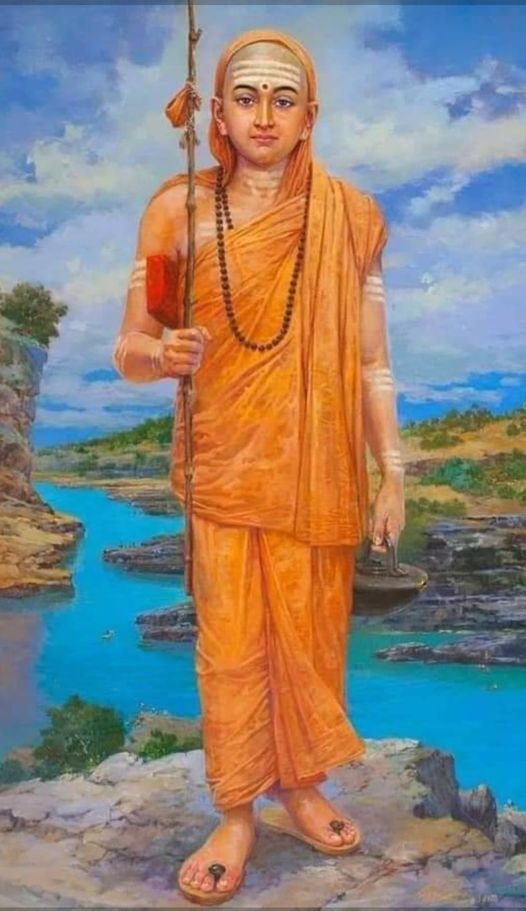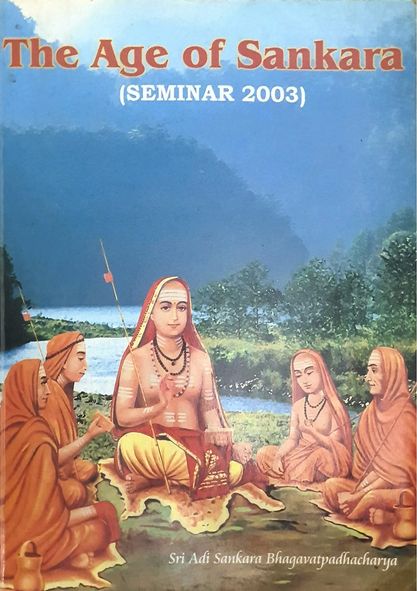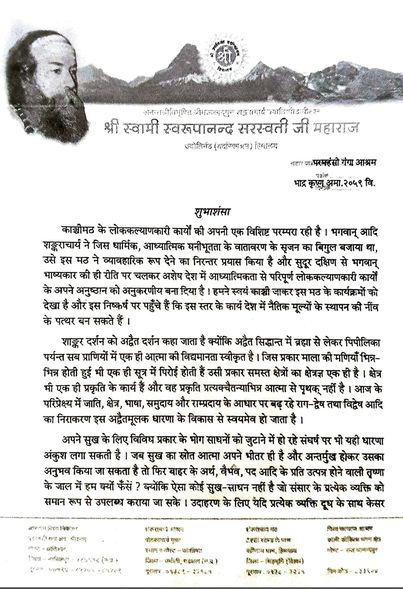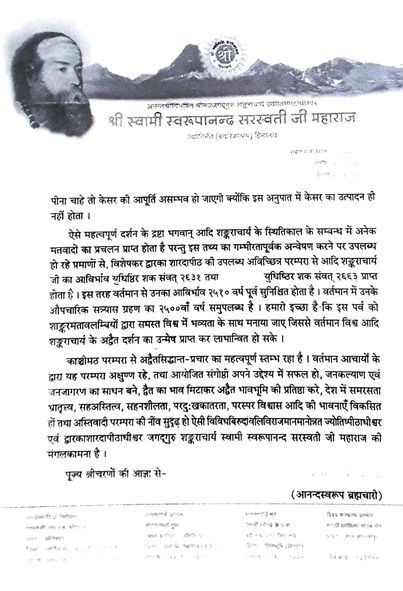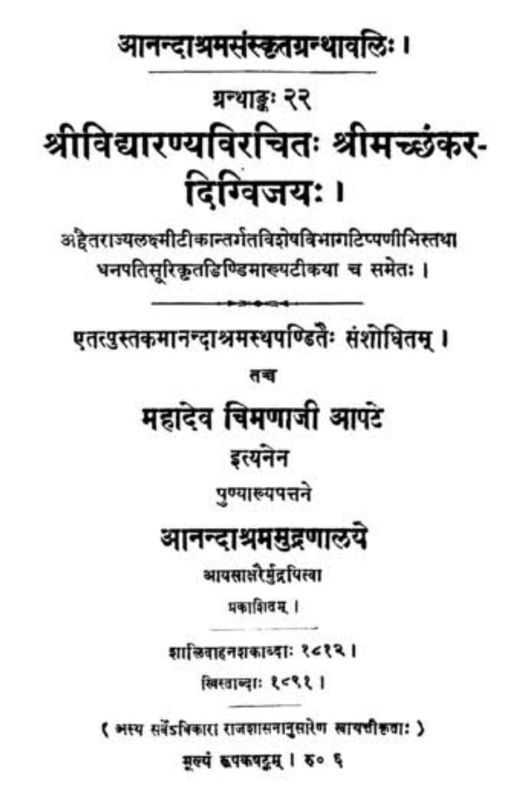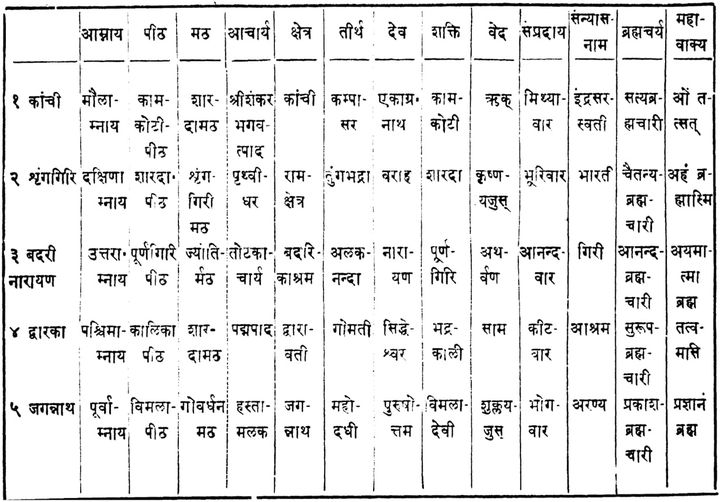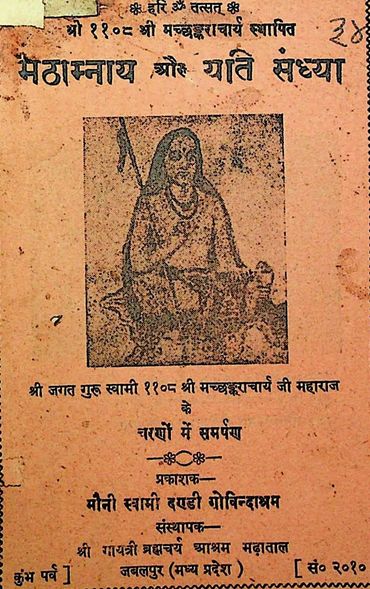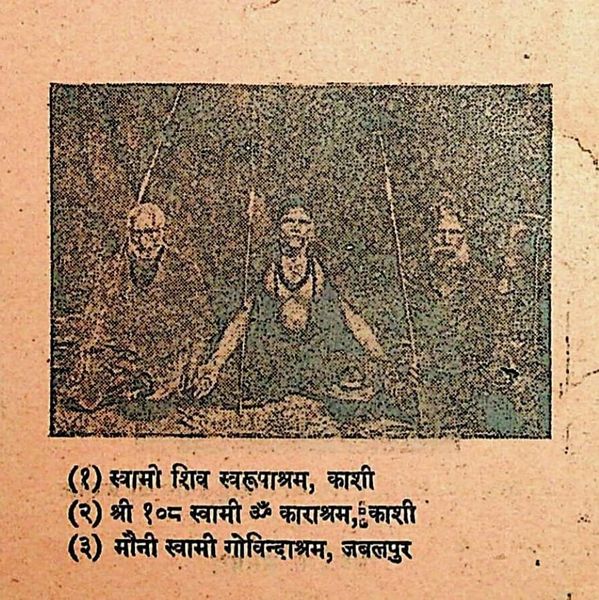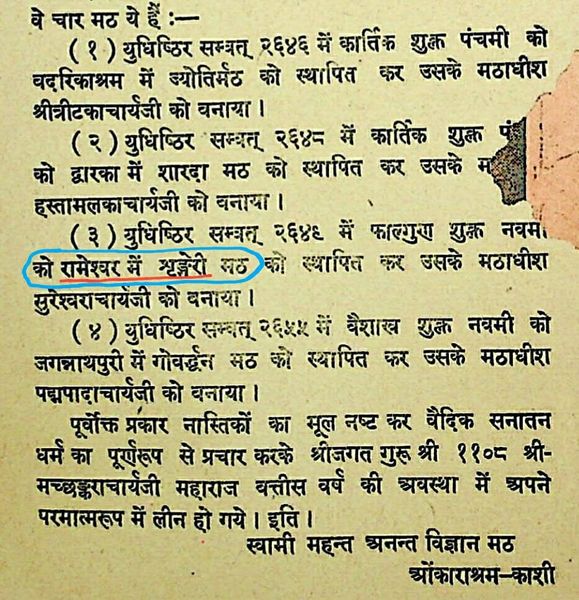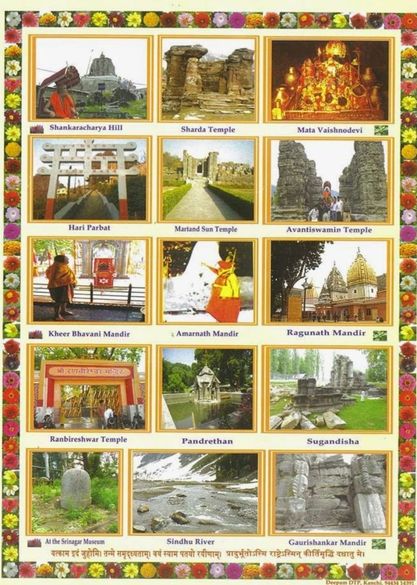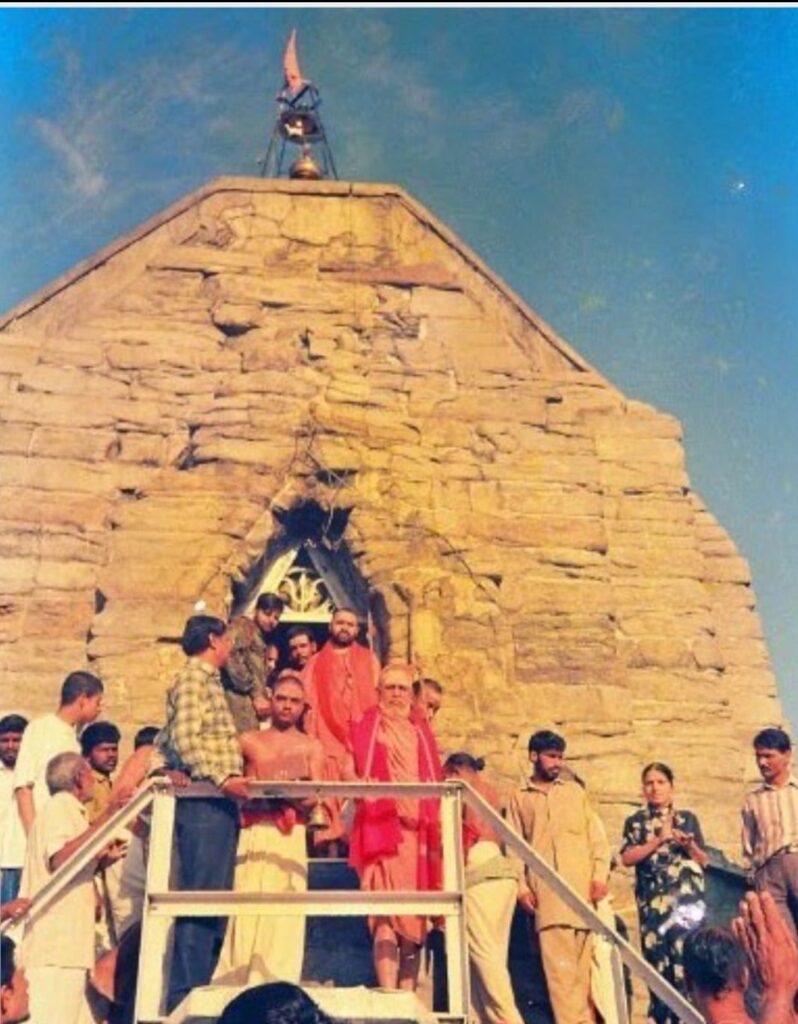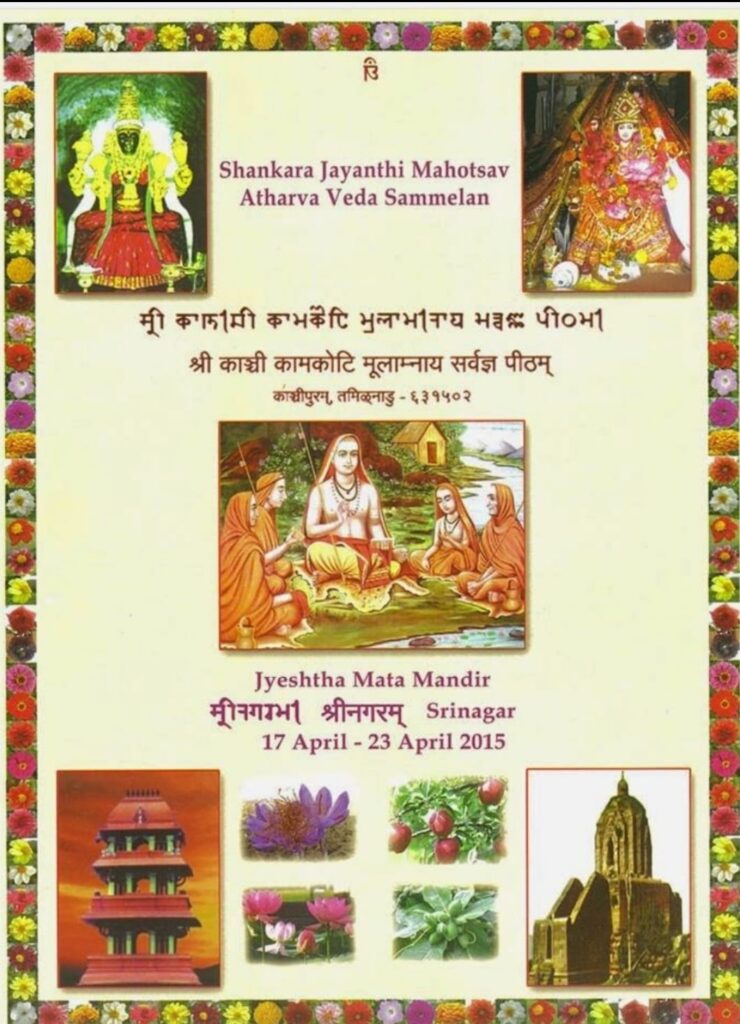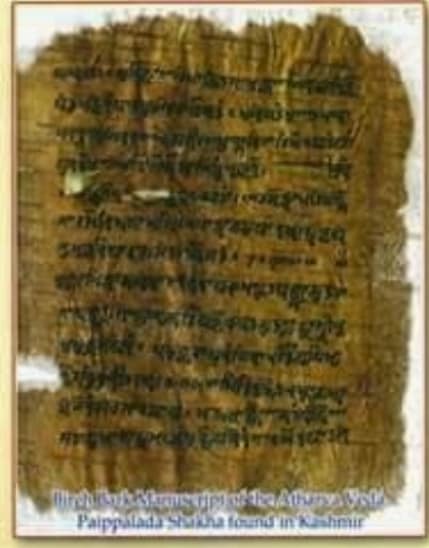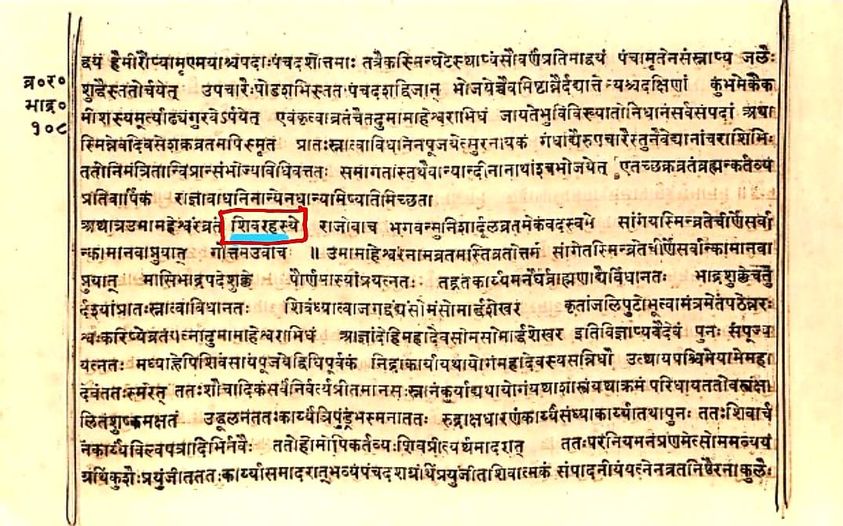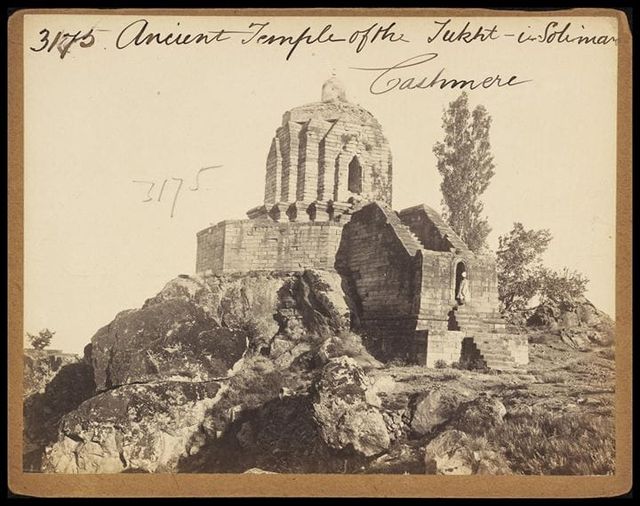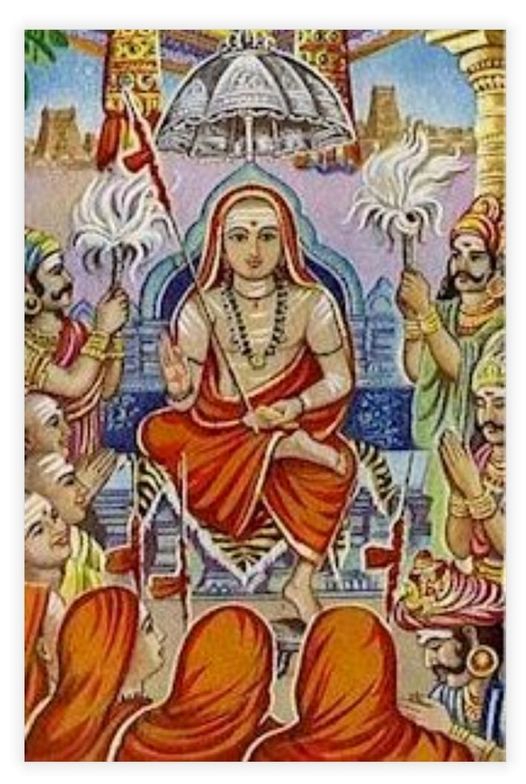ஸ்ரீசங்கர பகவத்பாதர்களின் ஸர்வஜ்ஞ பீடாரோஹணம்
‘ஸர்வஜ்ஞ’ என்ற சொல்லிற்கு ‘எல்லா அறிவும் பெற்றவர்” எனப் பொருள் கூறலாம். அத்தகைய ஸர்வஜ்ஞர்கள் அமரக்கூடிய பீடமே ஸர்வஜ்ஞ பீடம் ஆகும்.
ஸ்ரீசங்கராசார்யர்தான் ஸர்வஜ்ஞர் எனில் மிகையாகாது. ஸ்ரீசங்கர பகவத்பாதர்களின் ஜீவ்ய சரித்திரத்தைக் கொண்ட ஐந்து ஸம்ஸ்க்ருதக் காப்பியங்களில் அவர் ஸர்வஜ்ஞ பீடமேறிய நிகழ்வு கூறப்படுகின்றது.
இந்நிகழ்ச்சி காஷ்மீரத்தில் நடைபெற்றதாக, மாதவர் என்பார் இயற்றிய ‘சங்கர திக்விஜயத்தில் சொல்லப்பட்டுள்ளது. இராஜ சூடாமணி தீக்ஷிதரின் சங்கராப்யுதயத்தில் காஞ்சியில் ஸர்வஜ்ஞ பீடமேறினதாகக் கூறப்பட்டுள்ளது. சித்விலாஸ சங்கர விஜயத்தின், 25-ஆவது அத்தியாயத்தில், 46 முதல் 61 முடிய. 16 செய்யுட்களில், சங்கரரின் ஸர்வஜ்ஞ பீடாரோஹண வைபவம் விவரிக்கப்பட்டுள்ளது.
இப்படியாக வட இந்தியாவில் ஒரு புனித இடத்தில் ஓரிடத்தில் ஸர்வஜ்ஞ பீடம் ஏறியது மற்ற சங்கர விஜயங்களிலிருந்து பாடல்களைத் தொகுத்தும், சில புதிய கதைகளைச் சேர்த்தும் மாதவர் என்னும் நவகாளிதாஸர் என்பாரால் பதினெட்டாம் நூற்றாண்டில் இயற்றப்பட்ட மாதவிய சங்கர விஜயத்தில் கண்டுள்ளபோதிலும், இந் நூலுக்கு வெகு காலம் முன்பே உருவான பிற சங்கர விஜய நூல்களில் தென் பாரதத்தில், மோக்ஷபுரியான காஞ்சியிலும் ஸ்ரீ ஆதிசங்கரர் ஸர்வஜ்ஞ பீடாரோஹணம் செய்தருளிய விவரம் தெளிவும் சொல்லப்பட்டுள்ளமை அறியத்தக்கது.
காஞ்சியின் மறுபெயர் காஷ்மீரம்
கேரளப் பகுதியைச் சேர்ந்த கோவிந்தநாதர் இயற்றிய ‘சங்கராச்சார்ய சரிதம்’ என்ற சிறு வரலாற்றின் ஒன்பதாம் அத்தியாயத்தில், முதல் 16 சுலோகங்கள் காஞ்சியில் ஸர்வஜ்ஞ பீடமேறிய வரலாற்றை கூறுகின்றன. பின்னர் மறுபடியும். அதே அத்தியாயத்தில், 77ஆம் செய்யுளில், காஞ்சிபுரத்தையடைந்த ஸ்ரீஆதிசங்கரர். ஸரஸ்வதியை வென்று, அங்கு ஸர்வஜ்ஞ பீடாரோஹணம் செய்து, பின்னர் சீடர்களுடன், விருஷாசலத்திற்குச் சென்று. அங்கு இவ்வுலகத்தை விட்டு ஸாயுஜ்யமடைந்தது சொல்லப்பட்டுள்ளது.
கோவிந்தநாதர் ஆசார்யரின் ஸர்வஜ்ஞ பீடாரோஹணம் காஞ்சியில் நடந்தேறிய விவரம் கூறியுள்ள தில், இரண்டு விஷயங்களைக் கூர்ந்து கவனிக்க வேண்டியுள்ளது. அத்தியாயத்தின் இறுதிப்பகுதியில் ஸ்ரீ ஆசார்யர்களின் ஸர்வஜ்ஞ பீடாரோஹணத்திற்குப்பின் அவரது மறைவு குறிப்பிடுவது ஒன்று. அத்தியாயத்தின் முதல் சுலோகத்திலும், அடுத்துள்ள சுலோகத்திலும் –
“பூமியை (பாரத நாட்டை) வலமாக யாத்திரை செய்து, மறுபடி காஞ்சிபுரத்தை அடைந்தார். இக் காஞ்சிபுரம், ஜம்பூத்வீபத்திற்கே பிரகாசத்தையளிக்கும் பாரதமண்டலத்தில் காஷ்மீரம் என்ற பெயருடனும் புகழடைந்துள்ளது’ என்று கூறப்பட்டுள்ளது இரண்டாம் விஷயம்.
இதிலிருந்து காஞ்சிபுரத்திற்கு காஷ்மீரம் என ஒரு மாற்றுப் பெயரும் பண்டைக்காலத்தில் இருந்திருக்க வேண்டும் என்பதை தெளிவாக நாம் அறியலாம்.
இப்படி தென்னிந்திய நகரங்கள் சிலவற்றிற்கு வட இந்திய நகரங்களின் பெயர்கள் சூட்டப்படுவது வழக்கில் இருந்ததற்குச் சான்றுகள் உள.
உதாரணமாகத் தமிழகத்திலுள்ள தென்னார்க்காடு மாவட்டத்தின் தலைமையிடமான கடலூர் திருப்பாதிரிப்புலியூர் எனவும் அழைக்கப்படுகின்றது. இத் திருப்பாதிரிப்புலியூர் தேவாரப்புகழ்பெற்ற சிவத்தலம் ஆகும். இங்கு கோயில் கொண்டு விளங்கும் ஈசனுக்குப் பாடலீச்வரர் எனப்பெயர். இக் கோயிலிலுள்ள சில கல்வெட்டுகளிலும்,மற்றும் அருகிலுள்ள சில ஊர்ச் சிலாசாஸனங்களிலும் இவ்வூரின் பெயர் ‘பாடலிபுரம்’ என்று காணப்படுகின்றது. மகதராஜ்யத்தின் பண்டைத் தலைநகர் சரித்திரப் புகழ் பெற்ற பாடலிபுத்ரம் (பாடலிபுரம்) என்பது அறிந்ததே.
பெருஞ்சிறப்பு வாய்ந்த ‘பாடலிபுரம்’ என்ற பெயர், தென்னாட்டிலுள்ள ஒரு கடற்கரைப் பட்டினத்திற்கும் முன்னர் இருந்துள்ளதென்பதும் இதன்மூலம் தெளிவாகின்றதல்லவா?
(ஸ்ரீகாஞ்சீ காமகோடி பீடாதிபதிகள் ஜகத்குரு பூஜ்யஸ்ரீ சந்த்ரசேகரேந்த்ர ஸரஸ்வதீ சங்கராசார்ய ஸ்வாமிகள் அவர்கள் அருளியவற்றுளிலிருந்து இந்நாள் அவர்களின் திருவவதார மஹோத்ஸவ தினத்தையொட்டி தொகுக்கப்பட்டு ஸ்ரீபாதபுஷ்பமாக அட்டித் தொழுது பணிந்து ஸமர்ப்பிக்கப்படுகிறது.)
